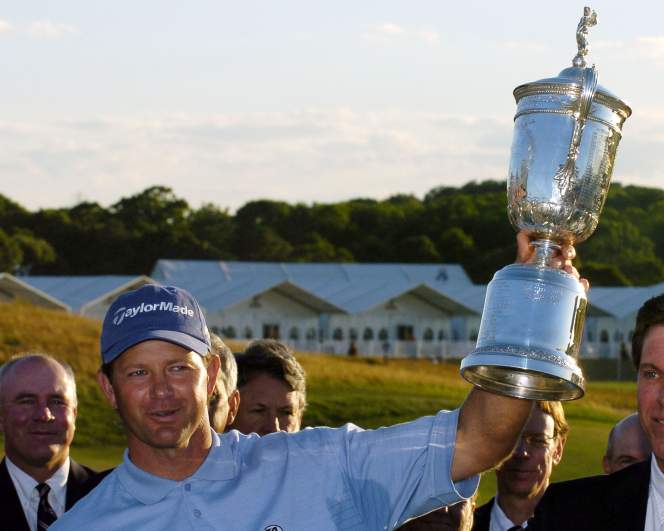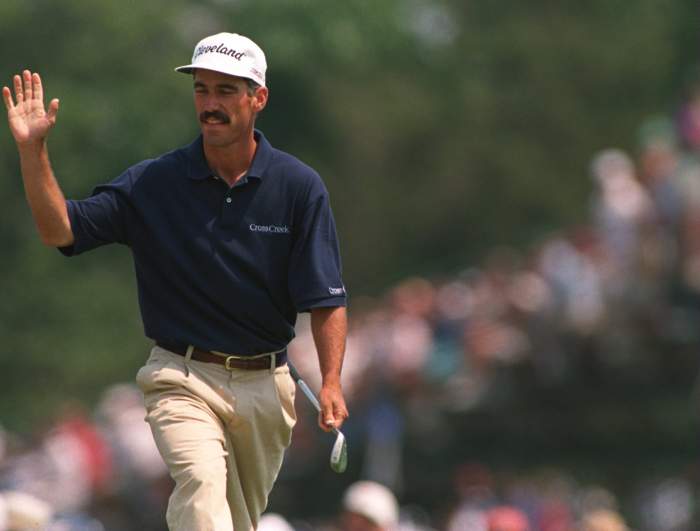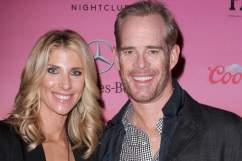
Getty Patrick Reed plays a shot during practice rounds prior to the 2018 U.S. Open at Shinnecock Hills Golf Club on June 11, 2018 in Southampton, New York.
The Shinnecock Hills Golf Club in Southampton, New York, on Long Island has proved to be one of the toughest tests in golf. The course, which was opened in 1891, has hosted the U.S. Open four times and has created memorable moments each time. The first tournament to be played at Shinnecock was in 1896, and was won by James Foulis, of Scotland. American Raymond Floyd won the second tournament at the Long Island club 100 years later in 1986. In 1995, another American, Corey Pavin, took home the victory. And in 2004, South African Retief Goosen held off Phil Mickelson for a two shot win.
This year, several players are vying to become the fifth U.S. Open champion to win at the wind-swept Shinnecock. Brutal conditions in the late afternoon on Saturday put the leaders at 3-over par, setting up a thrilling final round on Sunday. The nearly impossible third round was reminiscent of 2004, when dry and fast greens led to grueling conditions. “It was a great learning experience,” USGA executive director Mike Davis told Golf Digest in 2011. “When it comes to a U.S. Open, you’ve got the world’s best players, and you’re trying to set it up as the hardest event of the year. It’s easy to go from that point to having a setup where well-executed shots are penalized. And that’s exactly what was happening on some of the holes.”
Here’s a look at the four previous U.S. Open tournaments to be played at Shinnecock:
4-Under Par, Retief Goosen, 2004

GettyRetief Goosen wins the 2004 U. S. Open at Shinnecock Hills, June 20, 2004.
Retief Goosen was able to overcome the brutal playing conditions during the 2004 tournament and win at 4-under par. The New York Times called the 2004 event, “one of the most difficult and controversial course setups in United States Open history.”
Goosen told reporters after the win, “It was tough, actually quite painful out there, playing under pressure. The greens were just so brutally quick, even uphill putts were quick. I don’t think there was one slow putt out there.”
Phil Mickelson, who finished two shots behind Goosen, told reporters when asked if the course conditions were too difficult, “I played some of the best golf of my life, and still couldn’t shoot par. You tell me.”
Tom Kite, who finished at 22-over par, “I think when you have the absolute best players in the game playing a golf course, it’s probably supposed to give up a few good scores. I think our national championship is the premier event in golf. I think it’s a shame when they push the golf course to the limit as much as they have in this particular case. I was going for 90. I might have been going for 100. I had a stretch where I had seven holes where I had four double bogeys and a triple bogey. I can’t remember doing that even when I was 6 years old. It was just absolutely horrific.”
Even, Corey Pavin, 1995

GettyCorey Pavin at the 1995 U.S. Open.
Corey Pavin didn’t have it much easier at Shinnecock Hills in 1995, but he was able to hold off Greg Norman to win the U.S. Open by two shots at even par. He said it was a tough task to tackle the sprawling Shinnecock course.
“It’s the most pressure I’ve ever felt on a golf course,” Pavin told the New York Times. The then-35-year-old hit a clutch shot on the 18th and sprinted up the course after it. “I just tried to gather myself and make a good swing. I was trying to hit a low draw, and I knew I’d hit a good shot. I just took off running then because I wanted to see it. I knew it would get pretty close.”
Norman, who tried to chase down Pavin, told the New York Post this year that the New York crowd provided a different experience than most majors. “It is quite unique. And the first time I was really feeling it was at Shinnecock in 1986,” he said. “I had been performing quite well and I was a bit of a piranha going against the Americans. I got a little bit heated and the comments made just drilled into me over those three days. And I told the guy, ‘If you want to meet in the car park, let’s meet in the car park.’ That’s part of sporting and the individuality of the sport.”
1-Under Par, Raymond Floyd, 1986
Raymond Floyd won the first U.S. Open held at Shinnecock Hills in the 20th century in 1986, finishing at 1-under par and beating Chip Neck and Lanny Wadkins by two strokes. Floyd, who was 43 at the time of his victory, told the Palm Beach Post in 2011 it was the toughest tournament he ever played in.
“The night before laying in bed trying to go to sleep, I was telling myself, ‘You might never have that opportunity again,'” Floyd said. “Realistically, you’re thinking, this might be the last shot. I have to try to get this thing done.”
Floyd added, “I’d always had a mental conflict about the way the USGA set up the golf courses,” he said. “I had a little saying, ‘They don’t throw rocks on the court at Wimbledon.’ But I loved this golf course. I loved the way it was set up. It was so good, you couldn’t screw it up.”
He played through rain, cold and 40 mph gusts on Thursday, the first day of the tournament.
“You couldn’t even put the umbrellas up. The wind would just reverse them and take them away,” Floyd told the newspaper. “I literally survived. Getting through that day with a decent score was as much a part of winning as shooting four under on the last day.”
James Foulis, 1896
Shinnecock Hills hosted the second U.S. Open in 1896, just a few years after it opened. The tournament was won by James Foulis, a Scottish-American, according to PGA.com. He won by three strokes over England’s Horace Rawlins. The tournament was played in a 36-hole stroke-play format. Foulis took home a $150 prize.
According to PGA.com, “At 4,423 yards in 1896, Shinnecock Hills played as the shortest course in U.S. Open history. Its next U.S. Open was 90 years later, in 1986. By then, the course had been lengthened to 6,912 yards. For the 2018 U.S. Open, it will play at 7,445 yards as a par 70.”

Comments
Shinnecock Hills US Open History: What Was the Winning Score at Past Tournaments?